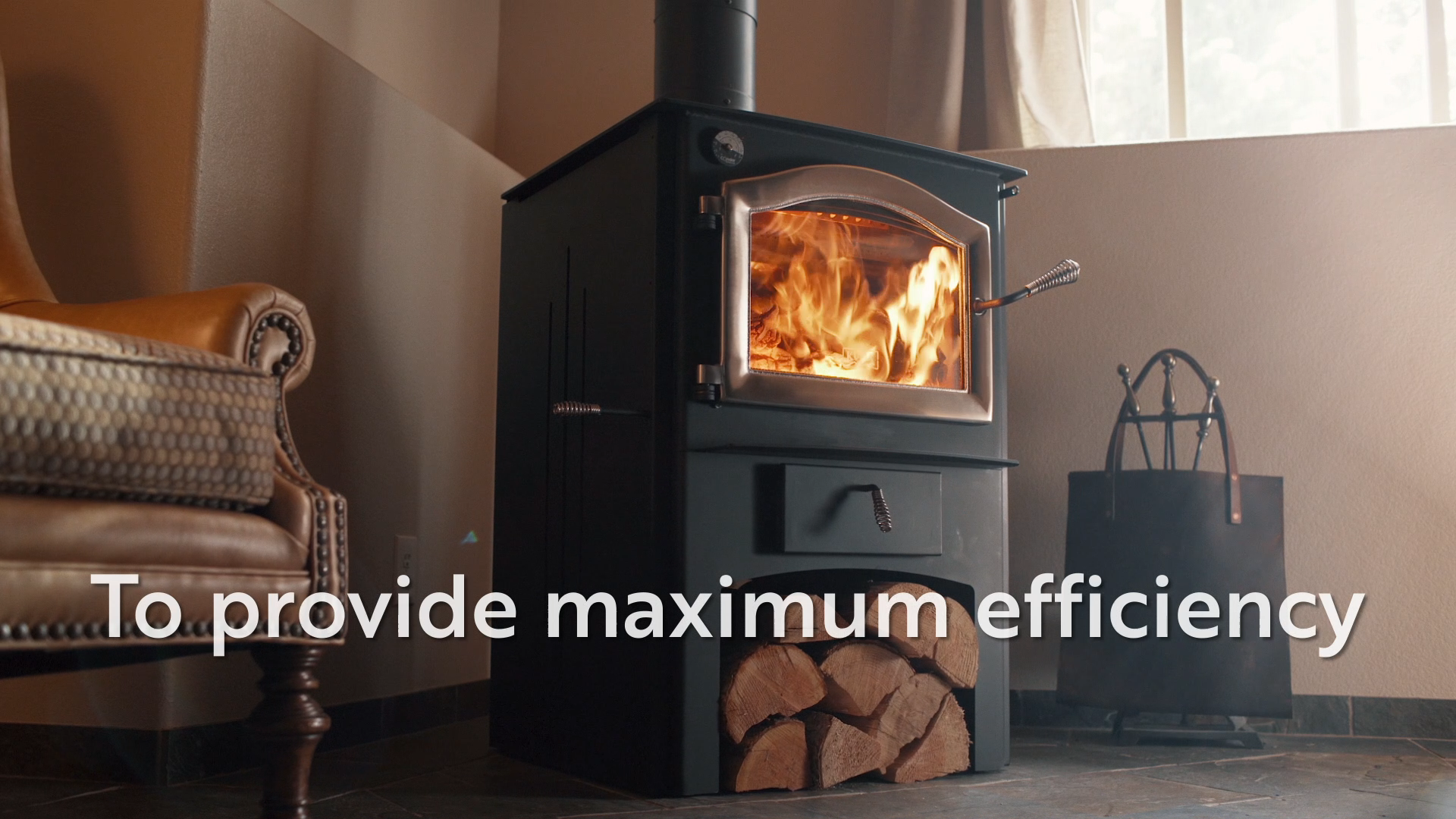Frequently Asked Questions About Hybrid Technology
As you read through our literature you will find that we refer to the burn system in a Kuma stove as a hybrid burn system. So what does that mean? Our stoves combine 2 distinct burn systems into the firebox each with their own unique advantages. The first is the thermal combustion system (burn tubes). Burn tubes work great at temperatures above 1000° delivering secondary combustion air to incinerate most of the smoke. The second is the catalytic combustor system which lowers the temperature at which wood smoke will burn down to 500° so on medium and low burn rates, hybrid stoves will continue to burn super clean and efficient. Our entire line of low emission hybrid stoves and inserts comply with EPA 2020 requirements and qualify for the 26% Federal Tax Credit.
Read on for some frequently asked questions about hybrid wood stoves...
Frequently Asked Questions about Hybrid Technology
Q: What is a catalytic combustor?
A: A combustor is a device that lowers the temperature at which wood smoke burns. This converts smoke and unwanted pollution into useable energy for your home, especially during low burn rates. Combustors are now being combined with non-catalytic technology (burn tubes) to create ultra-efficient hybrid wood stoves.
Q: Do they burn cleaner than non-catalytic stoves?
A: Yes, Yes, Yes and No. In virtually all burn rates, a catalytic or hybrid stove provides a cleaner burn than non-catalytic stoves:
|
Burn Rate: |
Low |
Medium |
Medium High |
High |
|
Emissions from a Kuma K-180 Series Hybrid Stove |
.38 gph |
.39 gph |
.40 |
2.03 |
|
Emissions from a leading Canadian Non-Hybrid Stove |
2.91 gph |
1.38 gph |
1.86 gph |
1.13 |
On average, wood stoves spend over 80% of their life in the low to medium burn rates.
Q: How does a hybrid stove operate compared to a non-catalytic stove.
A: An easy to use bypass lever allows you to quickly heat up the chimney before engaging the burn system. In addition to hybrid stoves, many non-hybrid stoves offer this same bypass feature as an added benefit to the operator.
Q: Does a catalytic stove require more maintenance?
A: Unlikely, maintenance is easier than ever in a well-designed hybrid stove. The catalytic can remain in place during any cleaning or maintenance of the stove. If needed, the all-metal catalytic can be removed in seconds with no chance of damage. The combustor can be re-installed in seconds with a new gasket.
Q: Is there restriction on what fuel I can burn?
A: No more than any other stove: All wood stoves are required to have an extensive list of prohibited fuels that include glossy paper and chemically treated materials. If you shouldn’t burn it in a hybrid stove, you shouldn’t burn it in any stove.
Q: How long will the catalytic last?
A: Omni Environmental Laboratories, an independent test lab, performed a study on the effectiveness of catalytic combustors over time. The data showed that after 9 years of use, a stove equipped with a combustor is still cleaner and more efficient than non-catalytic stoves. Additionally, the warranty on a Kuma Hybrid combustor is 12 years: That is 7 years longer than some manufacturers will warrant their entire stove.
Q: How do I know if my catalytic stops working?
A: With a hybrid stove, the thermal combustion system (burn tubes) does most of the work so you will likely not notice any reduction in performance over time.
Q: Are combustors unreliable and fragile?
A: No, an all-metal combustor encased in thick stainless steel is just as durable as any other baffle component in a stove. 40 years ago, some poorly placed ceramic combustors were prone to early failure. Some manufacturers may attempt to scare customers with this outdated misinformation.
Q: Why do manufacturers use them?
A: To achieve longer burn times and higher efficiency than non-catalytic stoves. If you compare the burn rate and efficiency from each stove’s official test data, you will find the hybrid stove to be unquestionably superior.
Please login to publish a comment.
Comments (33)
-

Kx1fbq0K
-

*1
-

*1
-

*1
-

*1
-

-1 OR 5*5=25 --
-

-1 OR 5*5=26 --
-

-1 OR 5*5=25
-

-1 OR 5*5=26
-

*if(now()=sysdate(),sleep(15),0)
-

0'XOR( *if(now()=sysdate(),sleep(15),0))XOR'Z
-

0"XOR( *if(now()=sysdate(),sleep(15),0))XOR"Z
-

(select(0)from(select(sleep(15)))v)/*'+(select(0)from(select(sleep(15)))v)+'"+(select(0)from(select(sleep(15)))v)+"*/
-

-1; waitfor delay '0:0:15' --
-

-1); waitfor delay '0:0:15' --
-

-1)); waitfor delay '0:0:15' --
-

-1 waitfor delay '0:0:15' --
-

emkK3q40'; waitfor delay '0:0:15' --
-

2ZS7zRzh'); waitfor delay '0:0:15' --
-

9l1Pjlkh')); waitfor delay '0:0:15' --
-

-1 OR 661=(SELECT 661 FROM PG_SLEEP(15))--
-

-1) OR 603=(SELECT 603 FROM PG_SLEEP(15))--
-

-1)) OR 987=(SELECT 987 FROM PG_SLEEP(15))--
-

5WjjrfGm' OR 106=(SELECT 106 FROM PG_SLEEP(15))--
-

BerUkAoU') OR 501=(SELECT 501 FROM PG_SLEEP(15))--
-

FmvED3kc')) OR 972=(SELECT 972 FROM PG_SLEEP(15))--
-

*DBMS_PIPE.RECEIVE_MESSAGE(CHR(99)||CHR(99)||CHR(99),15)
-

'||DBMS_PIPE.RECEIVE_MESSAGE(CHR(98)||CHR(98)||CHR(98),15)||'
-

'"
-

����%2527%2522\'\"
-

@@v4nng
-

(select 198766*667891)
-

(select 198766*667891 from DUAL)


1
1 12/25/2025 11:38 AM